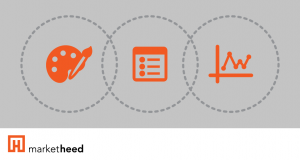— November 17, 2017
Stock photo
To stay ahead of the curve, Leadership and Organizational Development managers need to stay on top of the major trends that could affect their priorities—anticipating any changes and their impact so they can help the organization respond and ensure leaders are set up for success.
Some of the organizational development trends that HR experts should be aware of for 2018 include:
Growth of Cross-Functional and Cross-Generational Teams
Many organizations are working to create teams of employees who combine not only a range of specific business functions, but also different generations of workers (Gen X, Gen Y, Millennials, and Baby Boomers). The appeal of these cross-functional and cross-generational teams is that they combine a diverse array of viewpoints on a single team—which can have a positive impact for innovation.
However, building cross-functional teams requires organizations to clarify roles, responsibilities and decision authority, create effective communication between team members, and to set priorities so every team member can work better across the boundaries of their individual business units.
The creation of cross-generational teams gives organizations a chance to have their younger employees interact with and learn from their older, more experienced counterparts—gaining the benefits of their experience.
Yet, the establishment of these teams can add organizational complexity for OD experts to contend with. Finding an effective strategy for enabling teams to work better across organizational and physical boundaries is the key to success here.
An Increased Focus on Succession Management
As the Baby Boomer generation continues to enter retirement in increasing numbers, many organizations are being pressured to prepare suitable replacements for their most senior members. In fact, according to data from Pew Research Center, “roughly 10,000 Baby Boomers will turn 65 today, and about 10,000 more will cross that threshold every day” until 2030 (when all members of the Baby Boomer generation will have hit age 65).
The massive numbers of highly experienced and skilled workers leaving the workforce is widening the gap organizations are already facing between their available pool of talent and their needs—inhibiting growth.
To counter the “brain drain” of massive retirement by their most experienced personnel, many organizations are focusing on their succession management strategies to create a funnel of replacement personnel to take over for the workers who are exiting the workforce.
Some organizations have successfully leveraged cross-generational teams (coupled with mentoring programs) as a part of their succession management strategies so that future leaders can take over from their predecessors with less disruption.
Increased Organizational Complexity
As organizations grow and adapt to new technologies and practices, there is a trend towards increased complexity in organizational structures and inter-departmental interactions. This has been the case for years, and many OD experts have started to acquire new skills to adapt. As noted by the Society for Human Resource Management (SHRM); “there is a growing need for OD professionals skilled in organizational design and change management required to effectively implement enhanced organizational structures.”
Part of this increase in organizational complexity is powered by the availability of new technologies and by the increasing globalization of businesses. The introduction of cross-functional teams is another contributing factor. OD specialists in an organization can expect to be tasked with more responsibilities as the demands of their role increase.
Increased Reliance on Smartphone Apps for Managing the Organization
Smartphones and other mobile devices have become increasingly ubiquitous over the last few years. In fact, according to data from Pew Research Center, the use of smartphones by American adults jumped from just 35% in 2011 to 77% in 2016, and the use of tablets by American adults went from 3% in 2010 to 51% in 2016, and “nearly nine-in-ten Americans today are online.”
The prevalence of smartphone and tablets have led to the explosive growth of apps for not only personal entertainment, but for businesses as well. Collaboration and productivity applications abound on app-enabled devices—giving organizations a slew of options for managing activities.
However, organizational development experts can also use these mobile apps to help implement and guide change in their organizations. For example, team collaboration apps can be useful for communicating and enacting both organization-wide and subsystem changes quickly.
Also, these apps can be used to collect data on overall progress towards change goals—such as incremental improvements in productivity or the percentage of employees who have completed a specific online training course.
Preparing for Change—Is Your Organization Ready?
The above trends are just a few of the ones faced by modern OD experts. The only constant in organizational development is change—and being unprepared for change is why many OD initiatives fail.
To see if your organization is ready to face these changes, take this short change readiness quiz!
Business & Finance Articles on Business 2 Community
(134)
Report Post





